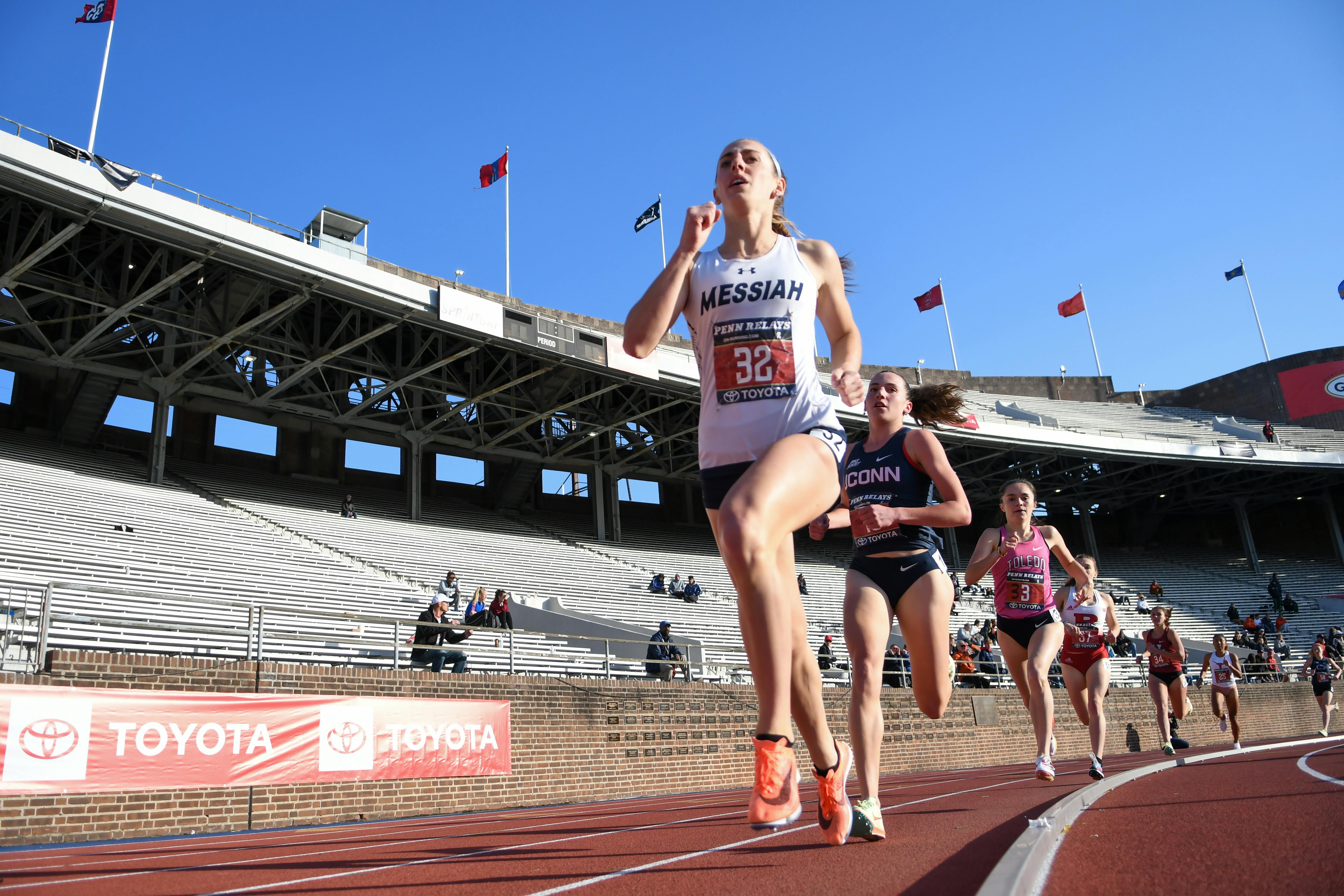
It has been 139 years since the first Penn Relays, and much has changed since then. Awards, competitors, and even the track itself has changed since the original Relays in 1895. Despite many changes, Penn’s most historical sports event continues to draw in crowds of over 100,000 from all around the world, keeping the tradition of the Penn Relays alive. Let’s take a look at the evolution of Penn Relays throughout the years.
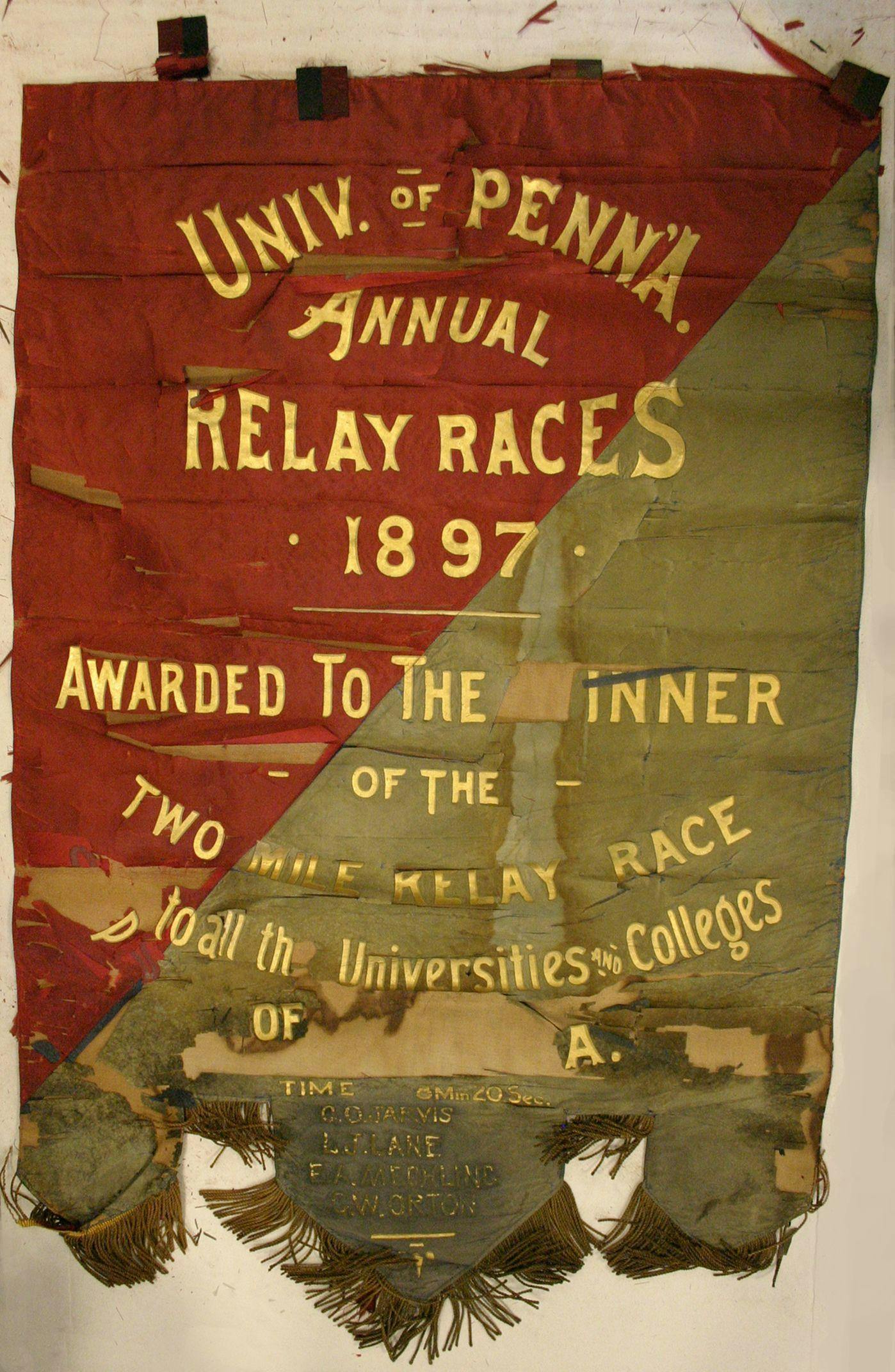
Penn Relays banner awarded in 1897.
The awards of Penn Relays have been one of its most defining features in the past. A variety of awards have been used, the most famous of which in recent years is the golden watch given to winners of championship races. Penn Relays has also awards “The Wheel”, a circular wooden plaque inscribed with the words “University of Pennsylvania Relay Carnival” with imagery of Penn’s founder, Benjamin Franklin, handing a laurel sprig to four runners. “The Wheel” has been given to teams that have won in a relay event since its creation in 1925, another tie to the Penn Relays’s impact in the creation of the relay. But before all of these newer prizes, Penn Relays awarded banners and cups to event winners.
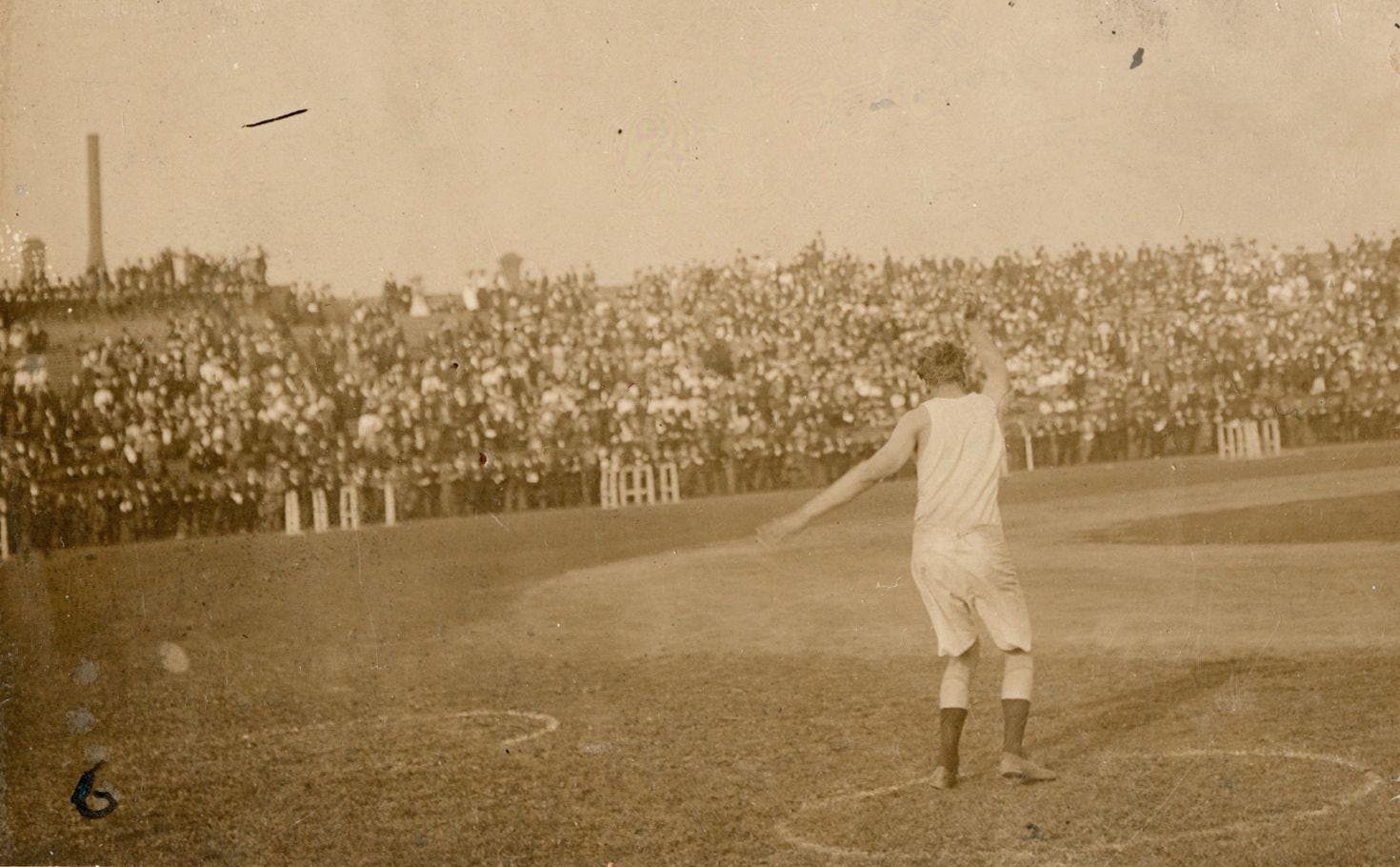
An athlete competes in the hammer throw at the 1910 Penn Relays Carnival.
The iconic Penn Relays Carnival name was adopted in 1910 due to the growing popularity of the Carnival spectator event. The Carnival started as a clump of tents on Franklin Field due to the incomplete construction, but has now become a cherished spectator attraction with bustling tents full of music, food, and languages of the many different cultures that are drawn to the Penn Relays.
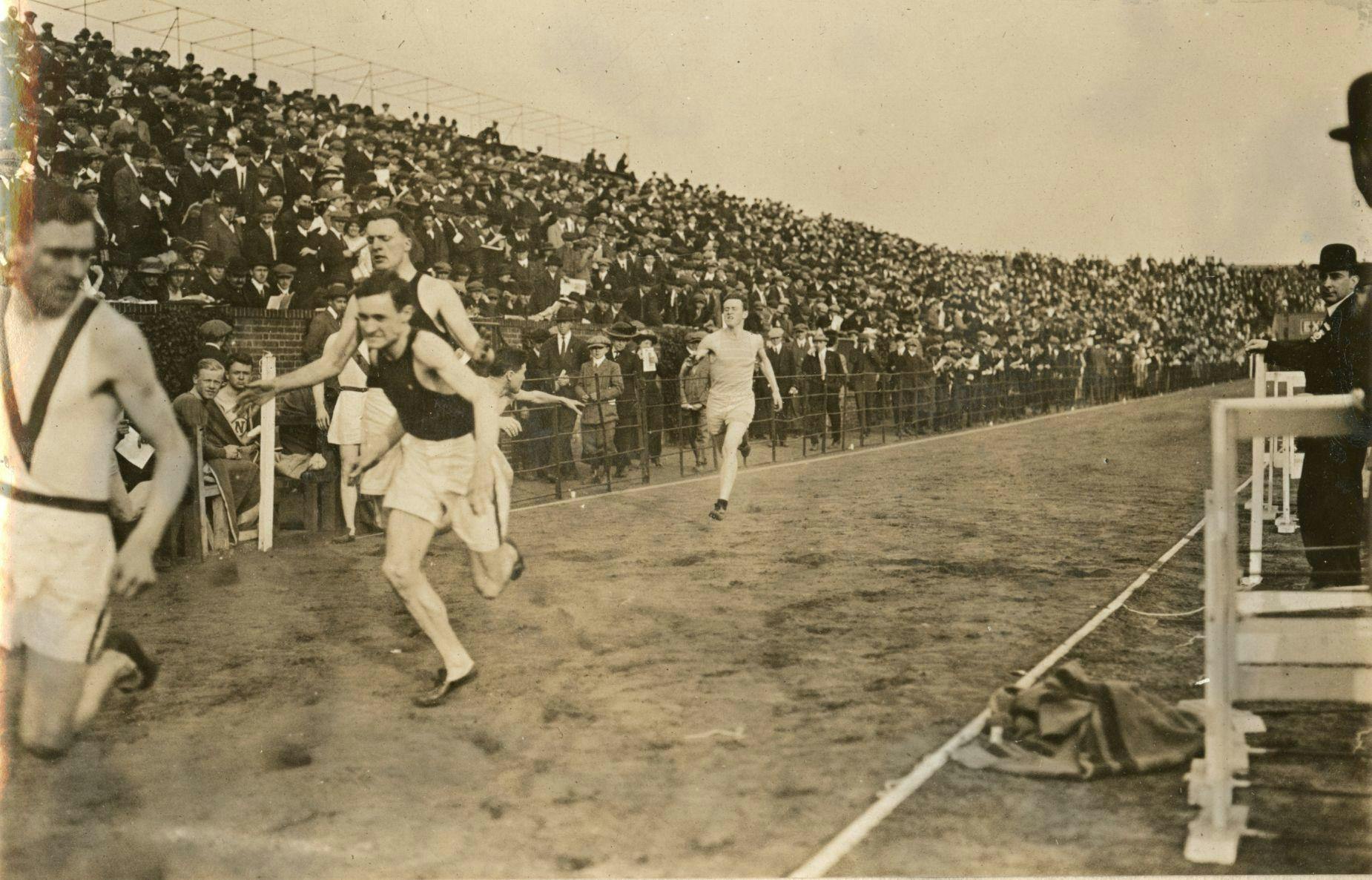
Athletes compete in a relay event during the 1913 Penn Relays.
Batons were first introduced into the Relays in 1913, following the usage of them in the 1912 Olympics. Before batons, runners had to touch the next runner who had to be still at their mark. Now, batons at the Relays are a coveted red and blue gem.
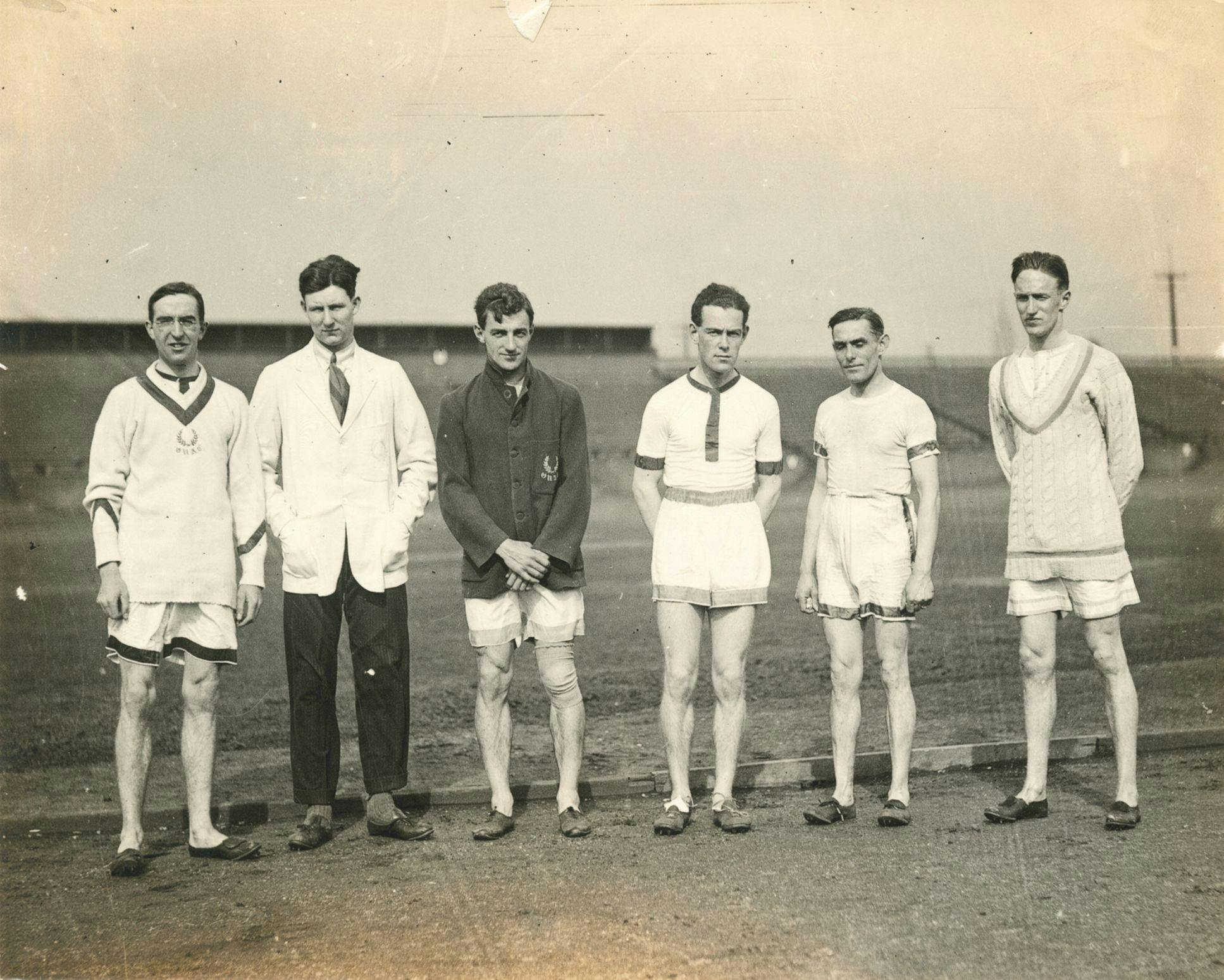
The combined Oxford-Cambridge team poses during the 1920 Penn Relays.
Before 1914, the Relays was not the international event it is today. It was a United States only meet, until the spring of 1914 when Oxford University was invited to compete. Since then, many other countries have taken part in the Relays, such as Jamaica, Trinidad and Tobago, and Guyana.
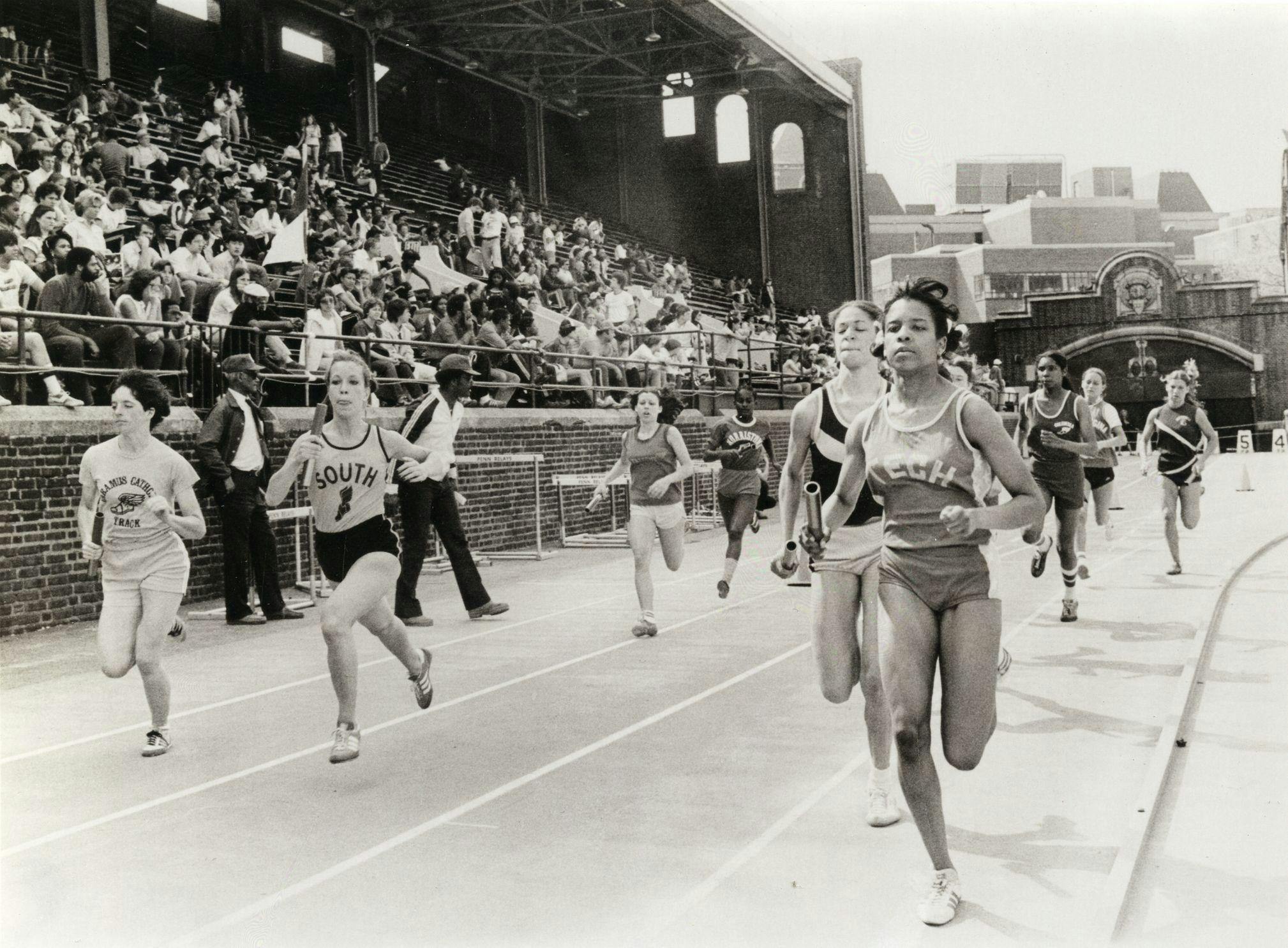
High school athletes run in a women's relay event at the 1980 Penn Relays.
Women’s events at Penn Relays were not introduced until 1962, with the addition of the women’s 100 yard dash. More women’s events were added in the years following, with the added women’s olympic development relay and high school 440y relay. Now, the over 300 events that Penn Relays currently host are equally split by gender.
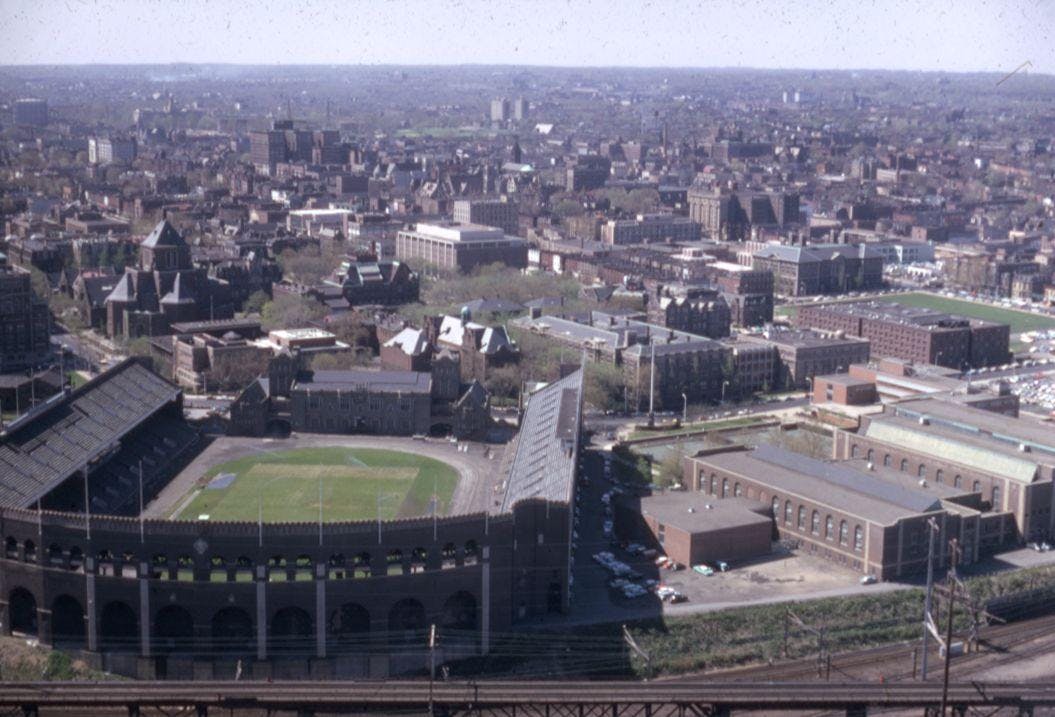
Franklin Field and Penn's campus in 1962.
The iconic track that we see now is not the one that the original Penn Relays was hosted on. In 1967, the red synthetic track became a part of Franklin Field’s distinctive design. The current synthetic track is one of the fastest track surfaces in use, a material that 84% of Penn Relays records have been run on.
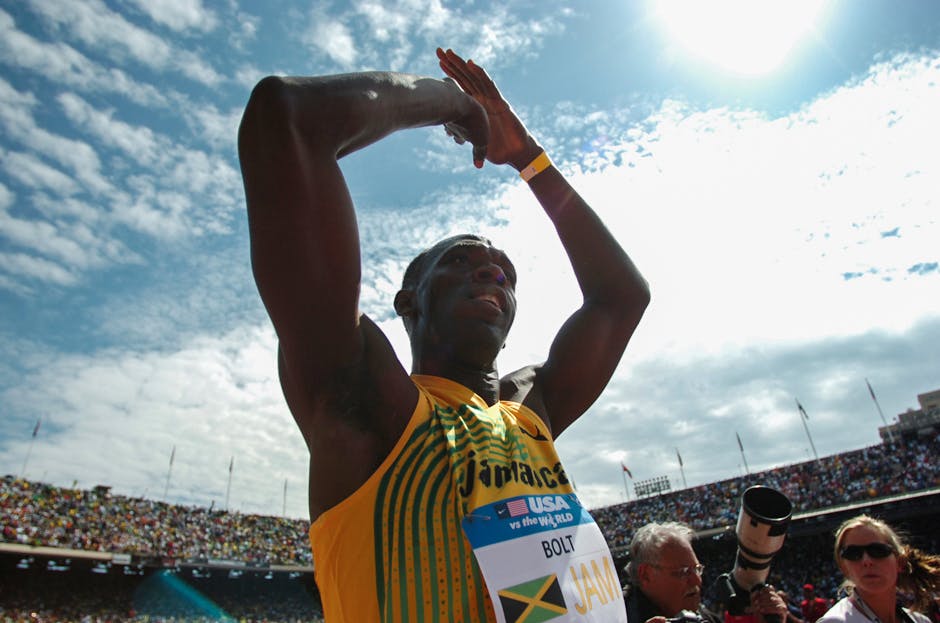
Usain Bolt during the USA v. the World relay event at the 2010 Penn Relays.
USA vs. the World brought iconic athletes to Franklin Field for several years. Usain Bolt, Marion Jones-Thompson, and Michael Johnson were some of the biggest names in this international event. For the first time since 2019, Penn Relays will be incorporating international events, now under the name of “The Global Relays”.
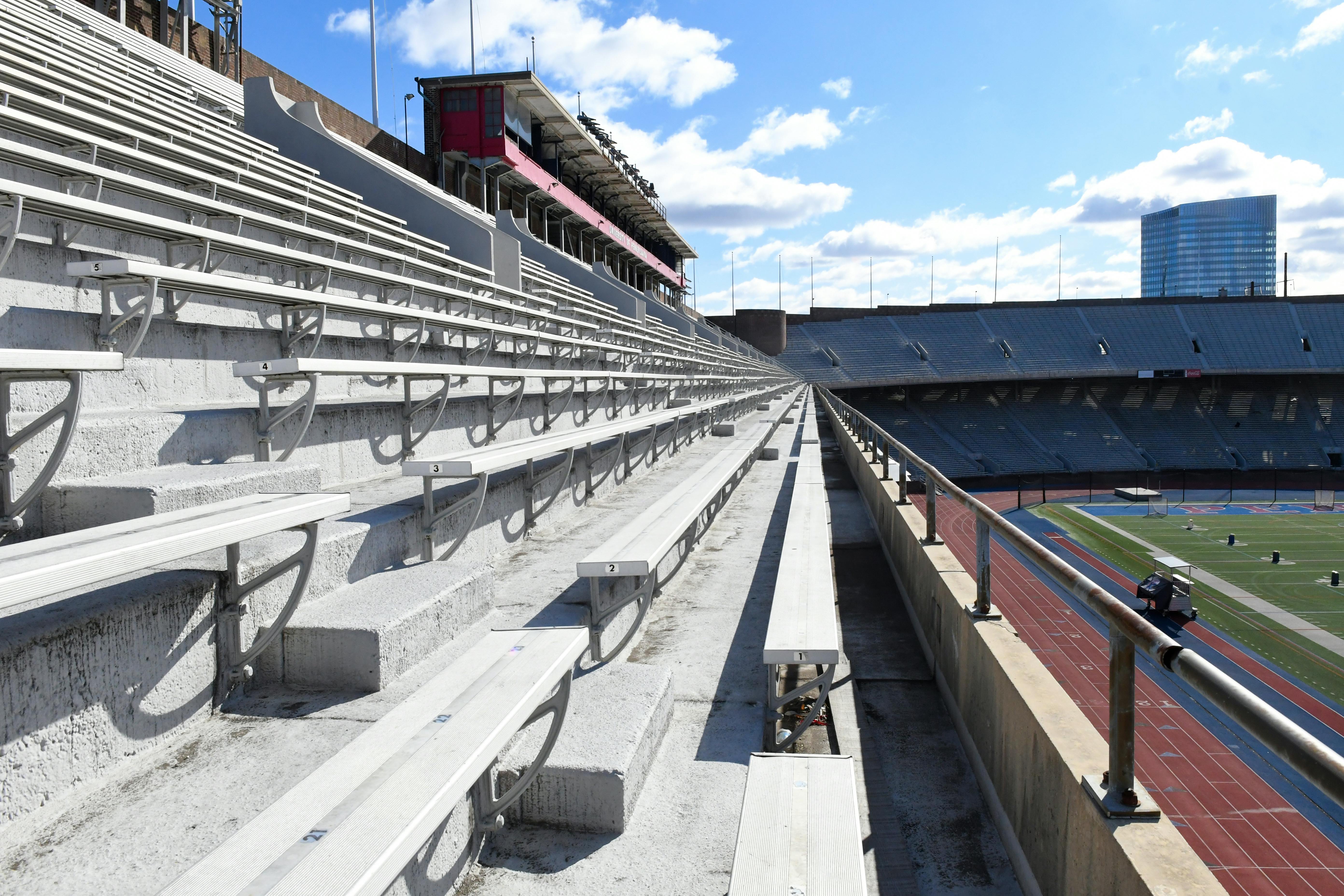
The NCAA's $2.8 billion settlement to pay current and former college athletes has sent shockwaves throughout university athletic departments.
The COVID-19 pandemic caused the first cancellation of Penn Relays since its inception in 1895. Franklin Field’s usually packed stands were empty for the spring of 2020 and 2021. As the world shut down, Penn Relays still sought to connect the world of track and field through digital Penn Relays.
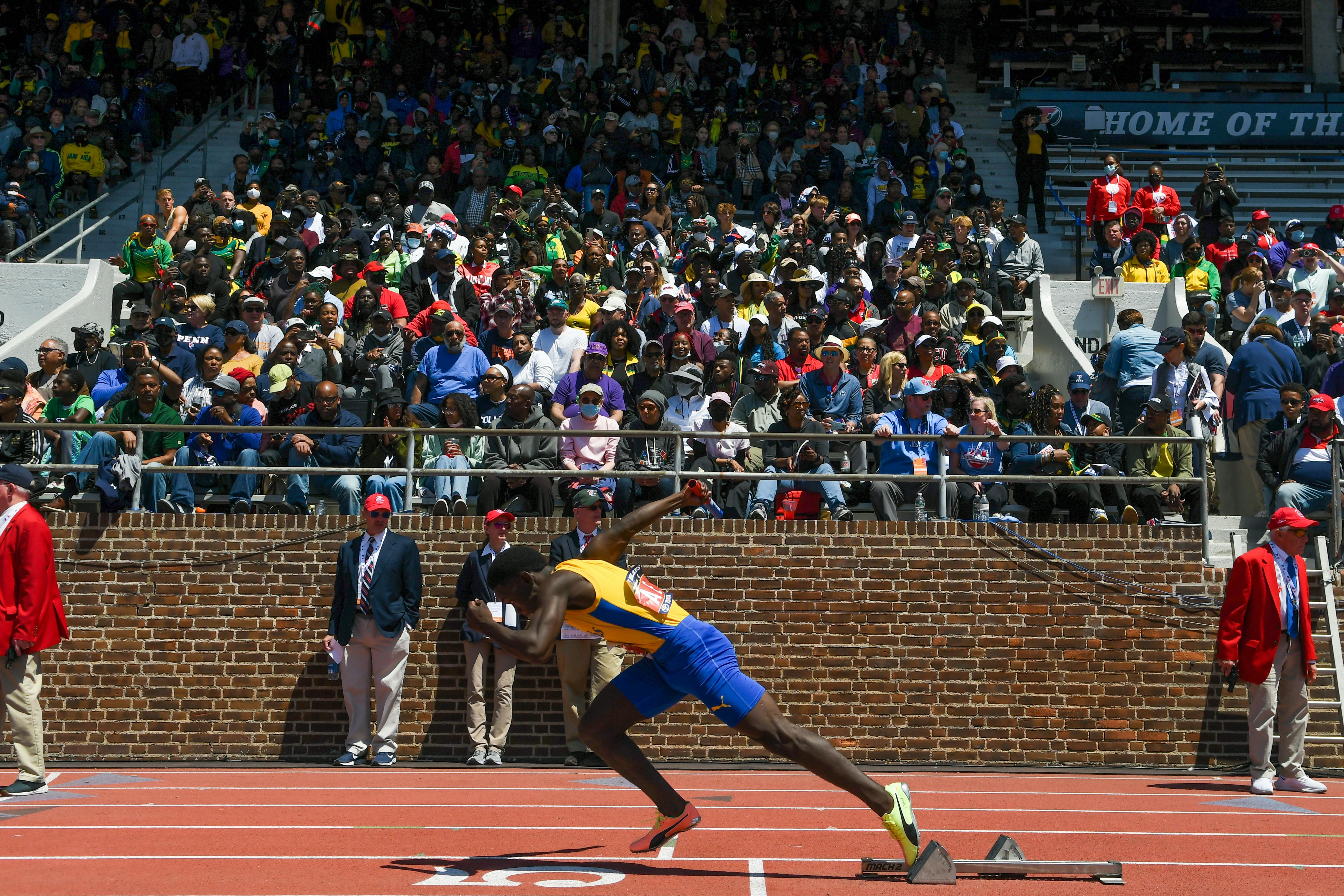
Spectators watch an athlete race in the Penn Relays on Apr. 30, 2022.
The Relays returned in 2022 after its COVID-19 hiatus, and Franklin Field was once again full of cheering crowds and elite athletes. Tens of thousands of people walked down Locust Walk to watch the much-anticipated Penn Relays.
After the Olympics and the World Championships, Penn Relays is the most watched track and field competition in the world. Its impact and legacy is known globally, featuring over 100 years of history. The Relays prepare to amp up once again during April 25-27, bringing the fans back to Franklin Field.
The Daily Pennsylvanian is an independent, student-run newspaper. Please consider making a donation to support the coverage that shapes the University. Your generosity ensures a future of strong journalism at Penn.
Donate





Most Read
Penn confirms five additional student visa revocations, bringing total to eight
Penn faculty criticize lack of University transparency after student visa revocations
Penn Medicine to take over two Crozer Health leases in $5 million deal amid system bankruptcy
More Like This
Jamaican sprinter Roneisha McGregor headlines 400-meter field at the Penn Relays
Inside the Penn Relays Track
Penn track & field breaks three program records over weekend
From Vashti Cunningham to Nia Akins, four athletes to keep an eye on ahead of 2024 Penn Relays
Penn swimming junior breaststroker Matt Fallon takes second at NCAA Championships